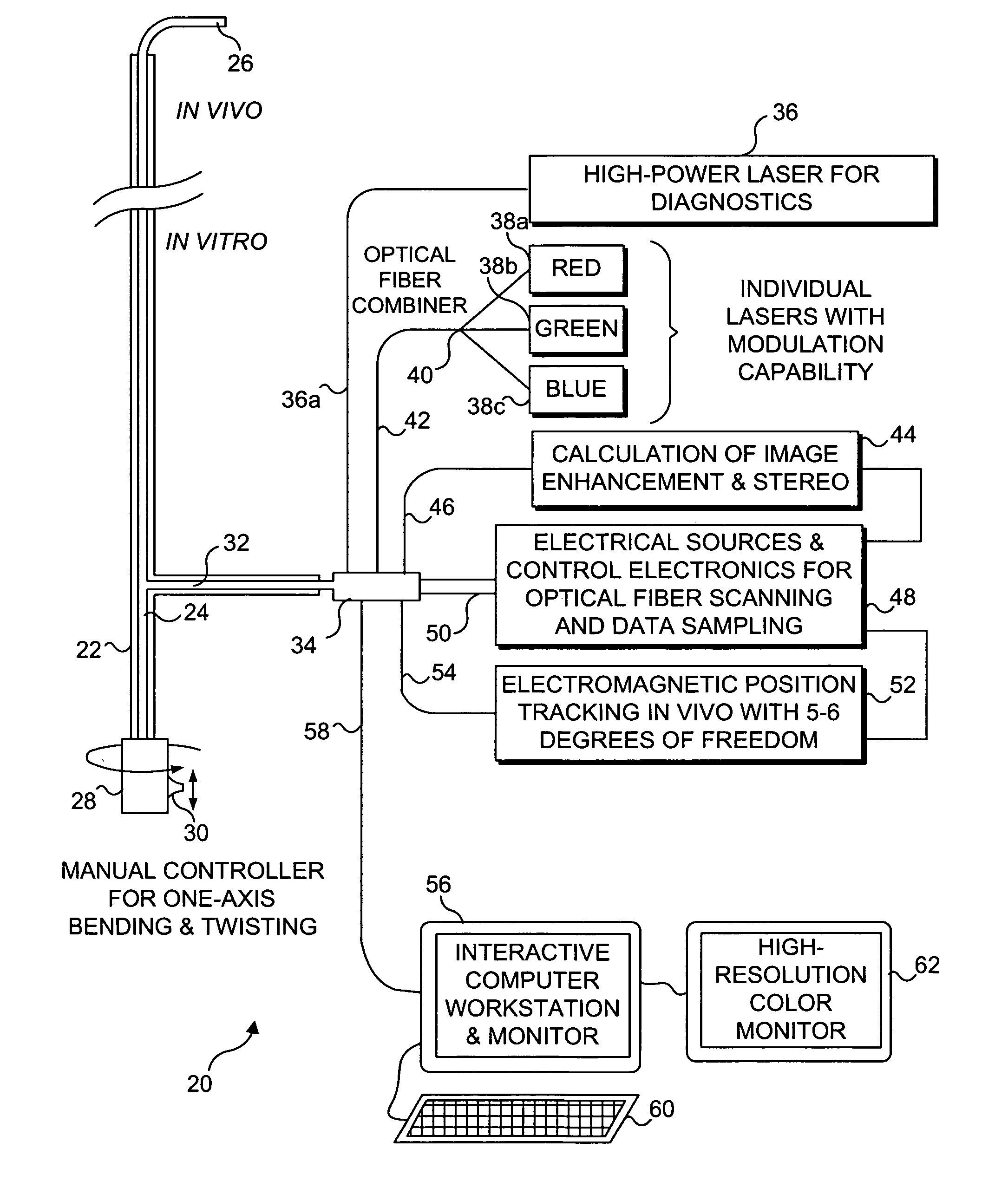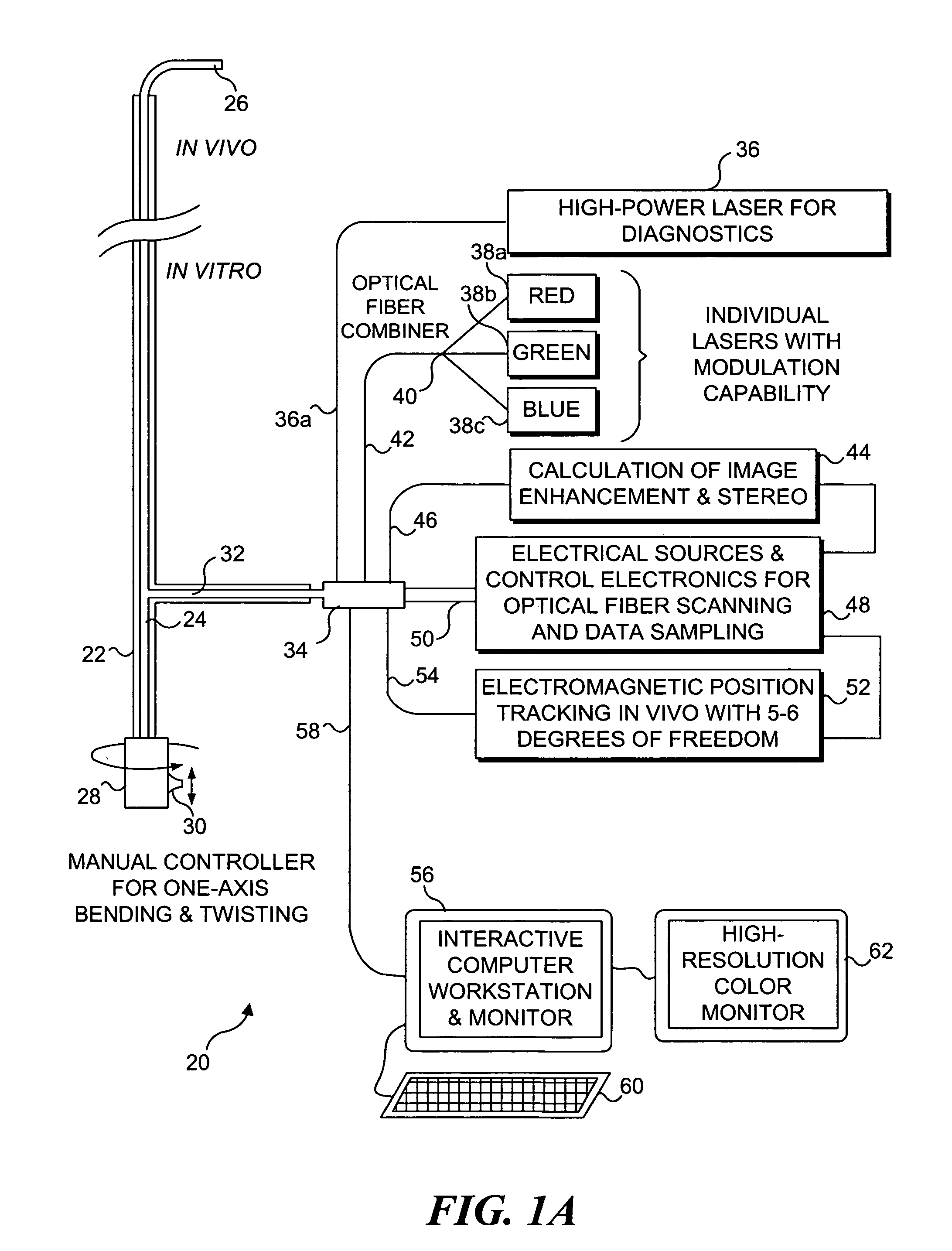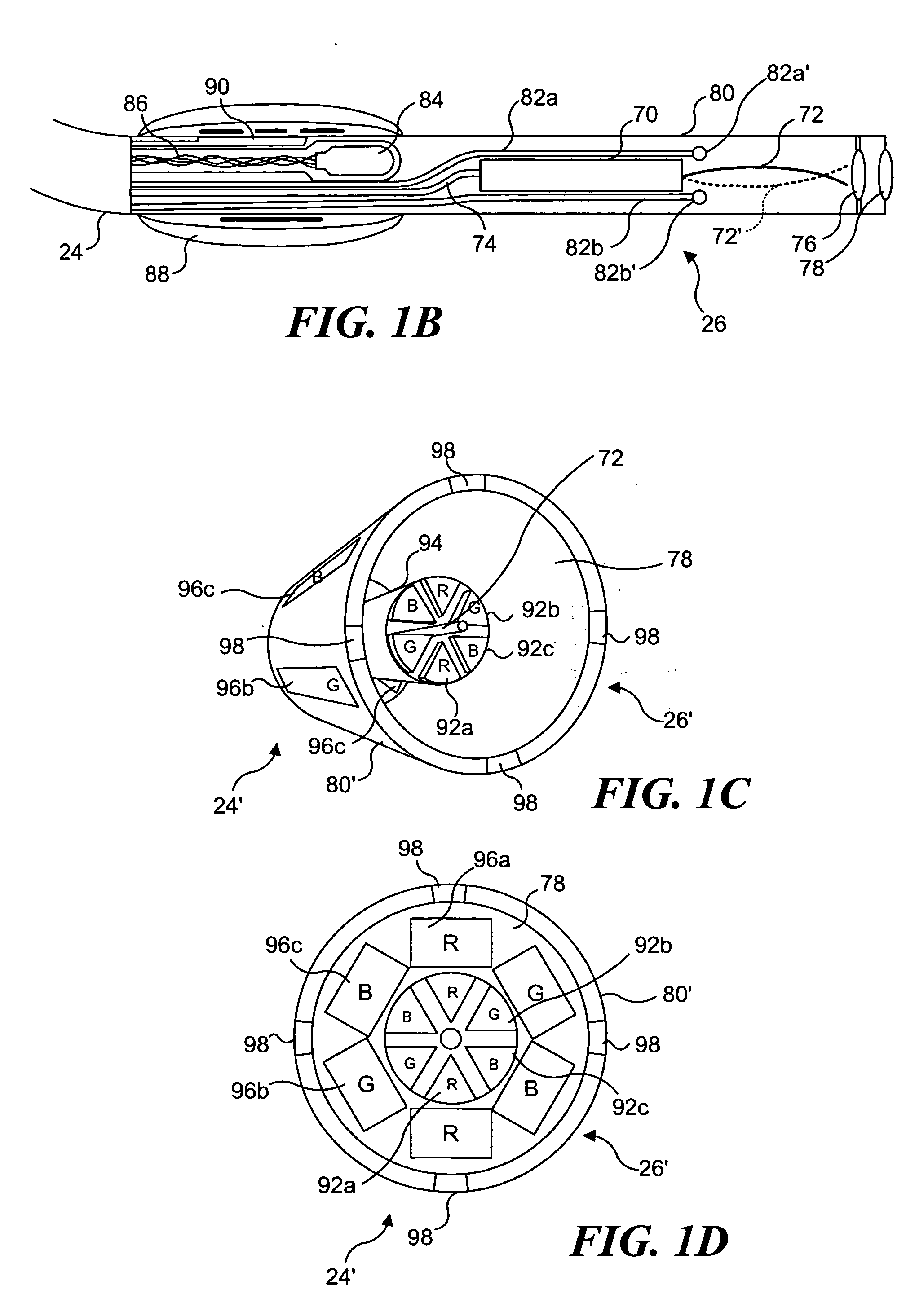Catheterscope 3D guidance and interface system
a technology of bronchoscopy and interface system, which is applied in the field of bronchoscopy 3d guidance and interface system, can solve the problems of difficult to reach in order to take tissue samples, difficult diagnostic problems, and current bronchoscopy only being able to fit within the relative large branches
- Summary
- Abstract
- Description
- Claims
- Application Information
AI Technical Summary
Benefits of technology
Problems solved by technology
Method used
Image
Examples
Embodiment Construction
Ultra-Thin Flexible Endoscopes
[0052] Ultra-thin flexible endoscopes have been devised for diagnostic imaging of small lumens with diameters similar to regions in the peripheral lung (i.e., with diameters less than 3 mm). A flexible endoscope of this capability has been achieved mainly by reducing the number of fibers contained within the imaging bundle. The disadvantage of this solution is that in removing fibers, the resolution and field of view are greatly diminished. Space restrictions preclude incorporation of a biopsy channel into the design. Although quite thinner than their predecessors, these flexible endoscopes also remain fairly expensive and often break at small bending radii. The poor imaging ability, fragility, expense, and inability to obtain tissue specimens deters the use of this type of bronchoscope for examination of masses in the peripheral lung.
[0053] The development of a 2 mm diameter flexible endoscope in accord with the present invention enables clinicians ...
PUM
 Login to View More
Login to View More Abstract
Description
Claims
Application Information
 Login to View More
Login to View More - R&D
- Intellectual Property
- Life Sciences
- Materials
- Tech Scout
- Unparalleled Data Quality
- Higher Quality Content
- 60% Fewer Hallucinations
Browse by: Latest US Patents, China's latest patents, Technical Efficacy Thesaurus, Application Domain, Technology Topic, Popular Technical Reports.
© 2025 PatSnap. All rights reserved.Legal|Privacy policy|Modern Slavery Act Transparency Statement|Sitemap|About US| Contact US: help@patsnap.com



